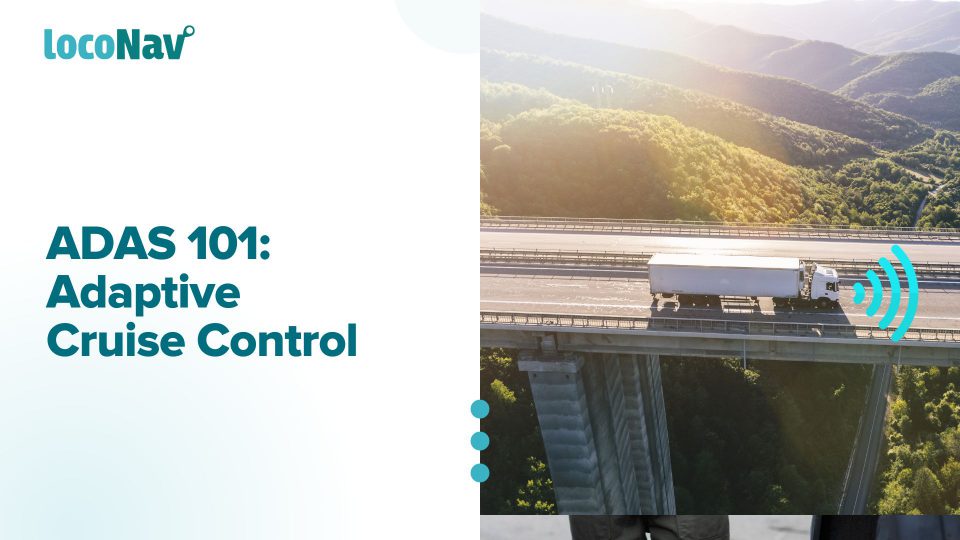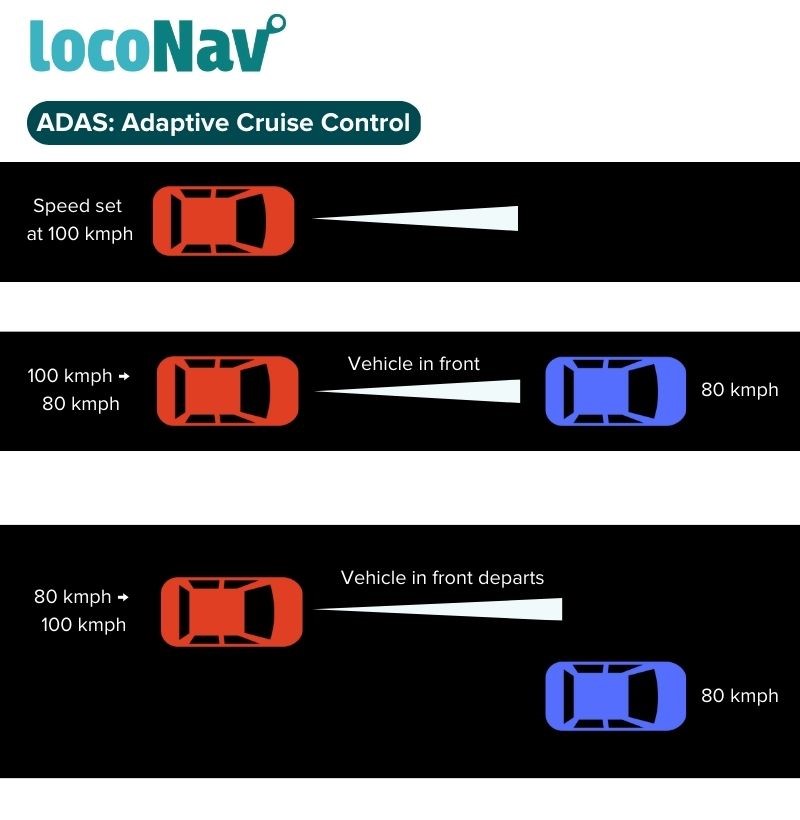

The future of mobility is autonomous. Commercial and private automobiles have been moving toward autonomy for a while now. As a result, none of us will be surprised by the transition to full autonomy. Driverless technology is available in automobiles ranging from autonomous sudden braking, lane and parking assist technologies, and internet access over mobile networks capable of keeping drivers linked to the online world.
Significant advances in vehicle safety in the past (e.g., shatter proof glass, three-point seatbelts, airbags) were passive safety features aimed to reduce injuries during an accident. Today, ADAS systems proactively increase safety by lowering the probability of accidents and injuries to occupants through the use of embedded vision.
In this blog, we will discuss ADAS Adaptive Cruise Control, what it is, how it works, and how it can be useful in real-world scenarios.
Advanced Video Telematics Solutions at Ridiculously Accessible Prices!
What is Adaptive Cruise Control?
Adaptive cruise control (ACC) is a driver assistance system that establishes a maximum speed for automobiles and automatically decreases the vehicle’s speed when traffic is detected in front of it. It is a Level 1 ADAS feature.
Standard cruise control enables the driver to select a constant pace and take their foot off the accelerator, but it requires the driver’s involvement to turn off cruise control when the set speed is no longer attainable. Adaptive cruise control allows for the intelligent, reactive adjustment of a vehicle’s speed without the need for human participation.
ADAS adaptive cruise control automates reactions in situations that would otherwise necessitate driver intervention. Without the need for driver engagement, the system can minimise driver fatigue-related incidents more than regular cruise control while maintaining a safe gap from vehicles ahead on the road.
How Does Adaptive Cruise Control Work?
To monitor other vehicles on the road, ADAS adaptive cruise control systems use internal computers and advanced sensors such as radar or laser systems. As a result, adaptive cruise control is often referred to as autonomous cruise control.
- The vehicle will monitor its surroundings once the driver has locked his or her preferred speed into the ACC system.
- A signal from the system’s radar headway is processed by a digital signal processor to measure the distance to the nearest automobile.
- A longitudinal controller is then used to determine a safe distance between vehicles.
- If the driver’s vehicle has insufficient braking distance, the ACC system transmits a signal to the engine or brakes, which causes the vehicle to slow down.
- When the path is clear, the ACC system returns the vehicle to the driver’s selected speed.
- The cruise control system assists the vehicle in maintaining a near-constant speed by reducing ventilation to the engine when the vehicle is near its set speed and boosting airflow when the vehicle is below its set speed.

What are the Benefits of Using ADAS Adaptive Cruise Control?
The most recent ADAS adaptive cruise control systems attempt to handle the entire route, offloading chores from the driver whenever possible. Here are some of the most intriguing benefits of ADAS Adaptive Cruise Control.
- Reduced likelihood of collisions by controlling speed and increasing spacing.
- Less stress while driving long distances.
- Improved driving comfort, particularly for people with disabilities
- Easier commutes, especially for systems with stop-and-go capabilities.
What are the Limitations of ADAS Adaptive Cruise Control?
Despite the numerous advantages of employing adaptive cruise control, there are several drawbacks to depending on this safety feature on a regular basis, including:
- Developing bad driving habits (such as higher speeds and aggressive braking)
- Possibly encountering ill-timed or inadequately spaced halt
- While the device is activated, braking times are delayed.
- Poor system performance when there is a lot of rain, fog, or snow.
Drivers who are familiar with their vehicle’s ACC system’s capabilities and limitations may be better prepared to manage these circumstances while driving, minimising their chances of being involved in a crash.
